Spring Break
So it's the first day of Spring Break and what did I do? I had the pleasure of spending the day at Brooklyn Prospect Charter School and teaching Mrs. Brown's 9th grade Earth Science classes about the expedition and how they can participate. What a wonderful group of kids! Thank you, Brooklyn Prospect Charter School for hosting me. I enjoyed talking with all of you and look forward to talking with you again throughout the expedition this summer.
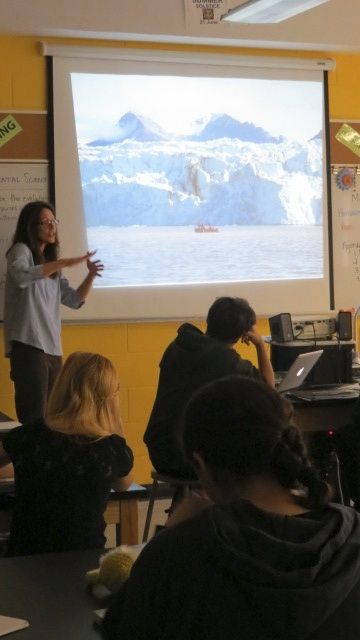
Glaciers
Our research this summer will focus on collecting data from the glaciers and melt water streams around Ny Alesund. As an Earth Science class, the students at Brooklyn Prospect Charter School have some background knowledge on glaciers and recently took a geology field trip in Central Park. It is interesting to make connections between present day glaciers and the landforms around us that are left behind as a result of past glaciation.
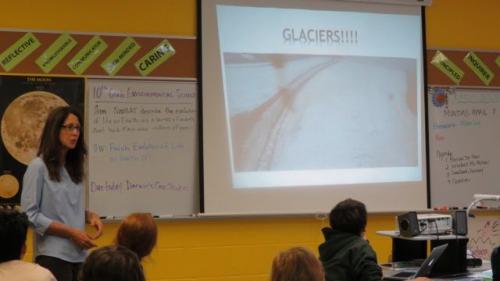
The Sun Will Not Set in Svalbard
We talked about how and why the sun will not set the entire time that I am in Svalbard. This is due to the sun's inclination or tilt of its axis by 23.26º. This is also what causes our seasons. In the summer, the inclination of the Earth's rotational axis points more toward the sun than other times of the year. As a result, any place inside the Arctic Circle (this includes Svalbard) never rotates out of the sun. There is a very cool animation that demonstrates how this works here.
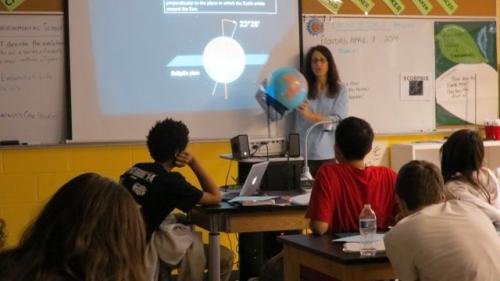
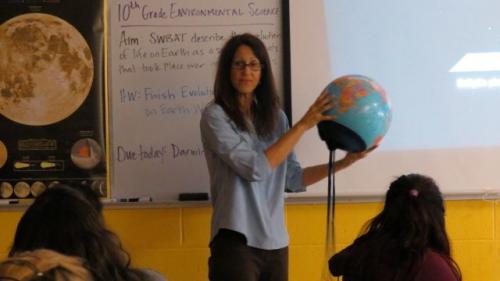
Connection to Planetary ScienceThe area of science of or pertaining to the planets; as, planetary inhabitants; planetary motions; planetary year, or a particulat planet, such as Earth.
Mrs. Brown's classes are now working on a planetary science unit so we made some connections to the other planets in the solar system. Do the other planets show inclination? Are they also tilted on their axis? Do they have seasons and do their poles have periods of constant day and constant night? The answers might surprise you!
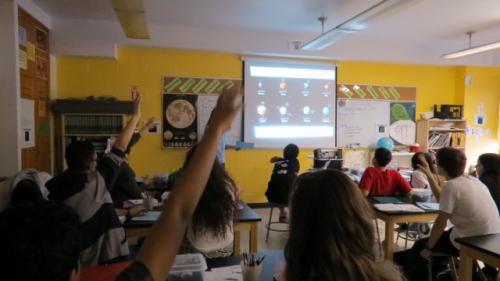
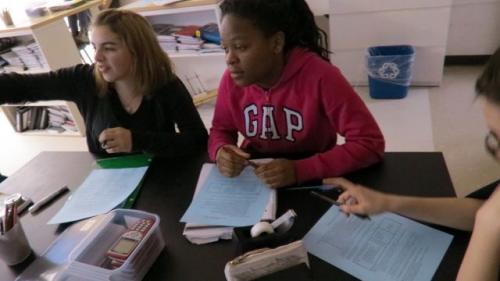
Take a Closer Look
Hey! Students at Brooklyn Prospect Charter School YOU will be featured in journal entries during the expedition! By coming up with "Take a Closer Look " questions, you have given me great ideas about what piques your curiosity. Thank you and I look forward to answering your questions.
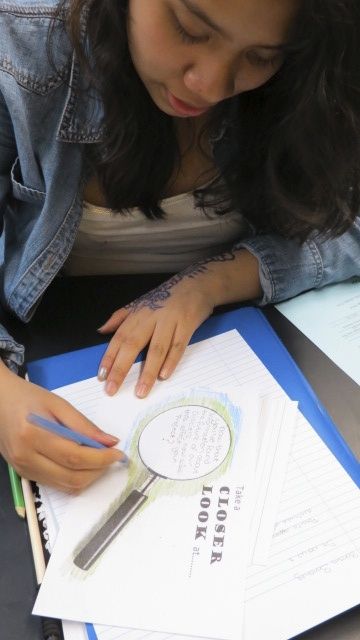
Post Cards from the Most Northerly Post Office in the World
Ny Alesund happens to have the most northern post office in the world. The students at Brooklyn Prospect Charter School made and addressed postcards to themselves that I will mail from the field. That's a pretty cool souvenir: a postcard with a postmark from the most northern post office in the world!
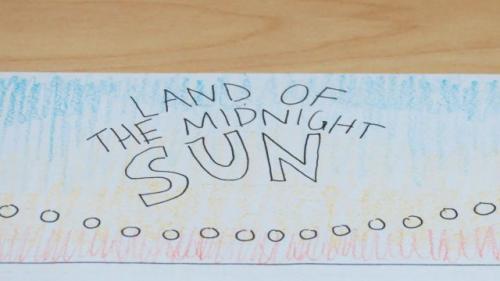
Michelle Brown
I met Mrs. Brown during the PolarTREC Orientation and ShareFair in Fairbanks, Alaska in February. She has already been to Antarctica where she participated in two separate expeditions in 2011: Human Impacts in Antarctica and Space Weather Monitoring on the Antarctic Plateau. You can read about her expeditions here and here. Thanks, Mrs. Brown for a great day with your delightful students!
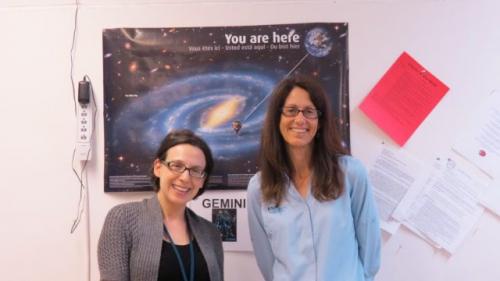
What if the Earth had no inclination? What if it was like Venus?
The questions from Brooklyn Prospect Charter school were so great and a few had to do with our discussion into inclination and planetary science so I just can't wait.........
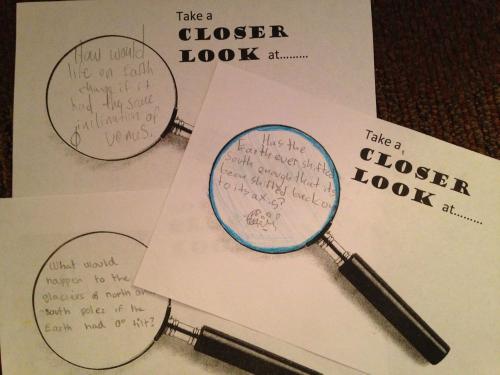
Has the Earth ever shifted enough that it was back to 0º inclination? What would happen to the glaciers at the poles if this happened? How would life change if Earth had the same inclination as Venus?
Great questions! When asked, "Has the Earth ever shifted back?" we have to ask another question: "Was the Earth's axis ever at 0º inclination and if yes, what happened to cause it to tilt?" All of the planets were formed from a nebula which is a spinning gas cloud. The sun formed in the middle and gravity caused the outer matter to consolidate into proto-planets. This was a very violent period for our solar system with planets and debris suffering numerous collisions. Presumably it was these collisions that knocked the young Earth into its present degree of inclination. Earth's inclination does vary, however not enough to take it back all the way to zero. It varies by 2.4º periodically over approximately 41,000 years. Therefore the Earth's inclination can be from 22.1º to 24.5º. This fluctuation is one factor in what is called Milankovitch Cycles. Milankovitch Theory considers different changes in the Earth's movement and describes the effects upon climate. But if the Earth DID shift all the way back to 0º, what would it be like? The obvious answer is there would be no seasons and everywhere on Earth would experience 12 hours of sunlight and 12 hours of darkness all year long. It would always be cold at the poles, always warm at the equator and somewhere in between at the other latitudes. So the glaciers at the poles would stay, they just would not experience their seasonal changes. It would be like a day in fall or spring every day, all year long. There would be little change in weather patterns; the same temperatures and precipitation would prevail all year. The inclination of Venus is 177º, which translates to Venus rotating upside down. How can we say that Venus is upside down when there really is no "up and down" in space? Well, Venus has a retrograde rotation; in other words, relative to the way the rest of the planets are rotating (and the rotational direction of the original spinning gas cloud), Venus is going backwards. How can we explain this backwards rotation? By turning it upside down. Imagine the powerful collision that must have occurred during the early solar system to knock Venus all the way upside down! What if Earth was like that? Well, 180-177=3º, so other than being upside down, Venus has what ends up to be a 3º inclination which is almost no inclination and we are back to no seasons, constant weather patterns and 12 hours of day and night all year long. However, the backwards rotation would change things; the most obvious effect would be that the sun would rise in the west and set in the east. It would also change the Coriolis force which describes the apparent turning of fluids on a rotating planet. So northern hemisphere storms and ocean currents would turn clockwise instead of counter-clockwise with the opposite happening in the southern hemisphere. But assuming that life on Earth evolved under these conditions, we would just think that this is normal! Thanks for the questions!


Comments